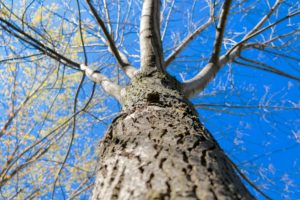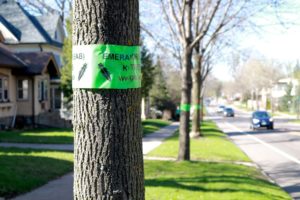
So far in 2017, about 800 ash trees in St. Paul have been cut down because of emerald ash borer, and neighbors are now left waiting for the stumps to be removed.
According to the City of St. Paul’s website, stump removal usually comes immediately after the tree is cut down, but this year has been a little different. Clare Cloyd, St. Paul’s public information officer of Parks and Recreation, said that the emerald ash borer infestation has been much worse in 2017 than in previous years. According to Cloyd, the amount of trees removed so far this year is double the amount removed by this time last year.
As a result, the city’s resources are focused on removing the trees.
“The infestation has been identified in over 95 percent of neighborhoods in St. Paul,” Cloyd said. “This year … our priority is on removals, so that’s what we’re continuing to do at this time.”

Currently, neighbors don’t know when the stumps on their streets will be removed, but Cloyd said it will definitely still happen.
“Reforestation, which is essentially the taking out the stumps and replanting trees, is as vital as removal,” Cloyd said. “Since we’re still continuing to focus on removals at this time, we’ll get back to the residents about the timeline for stumping and replanting as soon as we’re able to establish the timeline.”
Sally Bruggeman has lived in her neighborhood for about 12 years, and many ash trees on her street have recently been removed because of emerald ash borer. Though she said she understands why the trees had to go, Bruggeman said the loss came as a surprise.
“We knew the trees had problems, but I didn’t know these were all going to go. I had no idea; it was a shock,” Bruggeman said. “Everything’s so bare now, and it’s really sad.”
Bruggeman hopes for new trees to be planted as soon as possible, and one of her neighbors even took reforestation into his own hands.
“I don’t like the stumps. It’s just a bad reminder,” Bruggeman said. “Our neighbor got rid of his own stumps, and he’s going to plant trees on his property himself, so I’m happy about that.”
Cloyd said though the removal of infested trees is necessary, the forestry team realizes the loss of these trees can be an emotional one.
“We also understand that each tree does have a story,” Cloyd said. “They’re people’s trees, and we all know how much a tree can mean.”
Kassie Vivant can be reached at viva0001@stthomas.edu.

